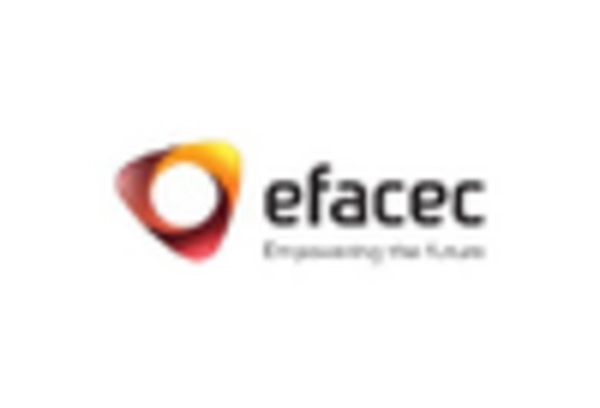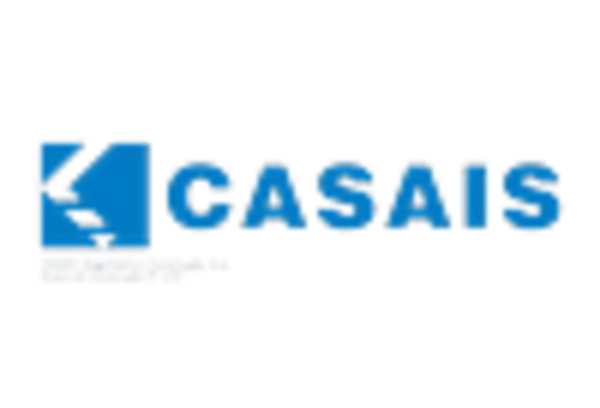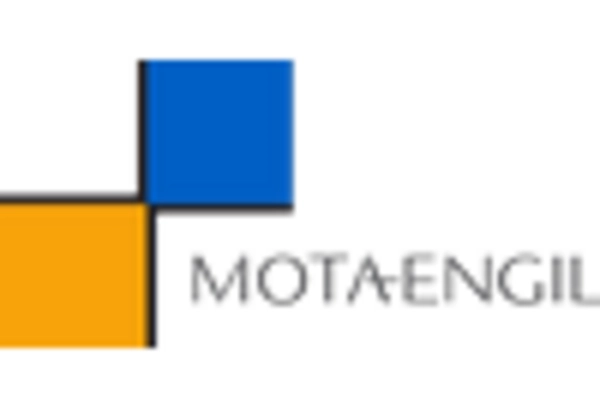Urbanization and Population Growth
The ongoing urbanization trend in Portugal is a pivotal driver for the Portugal Construction Market. As urban areas expand, the demand for residential, commercial, and infrastructure projects intensifies. The population in urban centers is projected to increase, leading to a heightened need for housing and public amenities. In 2025, urban areas are expected to house approximately 75% of the population, necessitating significant investment in construction. This urban growth not only stimulates residential construction but also enhances the demand for transportation networks, schools, and healthcare facilities. Consequently, the Portugal Construction Market is likely to experience robust growth as developers respond to these demographic shifts, creating opportunities for both new projects and renovations of existing structures.
Government Investment in Infrastructure
Government initiatives play a crucial role in shaping the Portugal Construction Market. The Portuguese government has committed to substantial investments in infrastructure development, particularly in transportation and energy sectors. In 2025, the government is expected to allocate over 3 billion euros towards enhancing road networks, public transport systems, and renewable energy projects. This investment is anticipated to stimulate job creation and economic growth, further driving demand for construction services. Additionally, public-private partnerships are becoming increasingly common, allowing for collaborative efforts in large-scale projects. As a result, the Portugal Construction Market is poised for expansion, with numerous opportunities arising from government-backed initiatives aimed at modernizing the country's infrastructure.
Foreign Investment and Economic Recovery
Foreign investment is a significant driver of growth in the Portugal Construction Market. In recent years, Portugal has become an attractive destination for international investors, particularly in the real estate sector. In 2025, foreign direct investment in construction is expected to reach approximately 2 billion euros, reflecting confidence in the country's economic recovery and potential for growth. This influx of capital is likely to facilitate the development of large-scale projects, including residential complexes and commercial spaces. Additionally, the presence of foreign investors often brings innovative practices and expertise, further enhancing the capabilities of the local construction market. Consequently, the Portugal Construction Market is poised for expansion, driven by increased foreign participation and investment in various construction initiatives.
Technological Innovations in Construction
Technological advancements are reshaping the landscape of the Portugal Construction Market. The integration of digital tools, such as Building Information Modeling (BIM) and project management software, is enhancing efficiency and collaboration among stakeholders. In 2025, it is projected that the adoption of these technologies will increase by 30%, streamlining project workflows and reducing costs. Moreover, the use of drones and 3D printing is becoming more prevalent, allowing for faster and more precise construction processes. These innovations not only improve productivity but also contribute to better quality control and safety on construction sites. As a result, the Portugal Construction Market is likely to experience a paradigm shift, with technology playing a central role in driving growth and competitiveness.
Sustainability and Green Building Practices
Sustainability has emerged as a key focus within the Portugal Construction Market. There is a growing emphasis on eco-friendly building practices and materials, driven by both regulatory frameworks and consumer preferences. In 2025, it is estimated that over 40% of new construction projects will incorporate sustainable practices, such as energy-efficient designs and the use of recycled materials. This shift not only aligns with The Portugal Construction's competitiveness. Developers are increasingly seeking certifications like LEED and BREEAM, which signify adherence to environmental standards. Consequently, the Portugal Construction Market is likely to witness a transformation as stakeholders prioritize sustainability, leading to innovative construction methods and a reduction in the carbon footprint of new developments.

















Leave a Comment